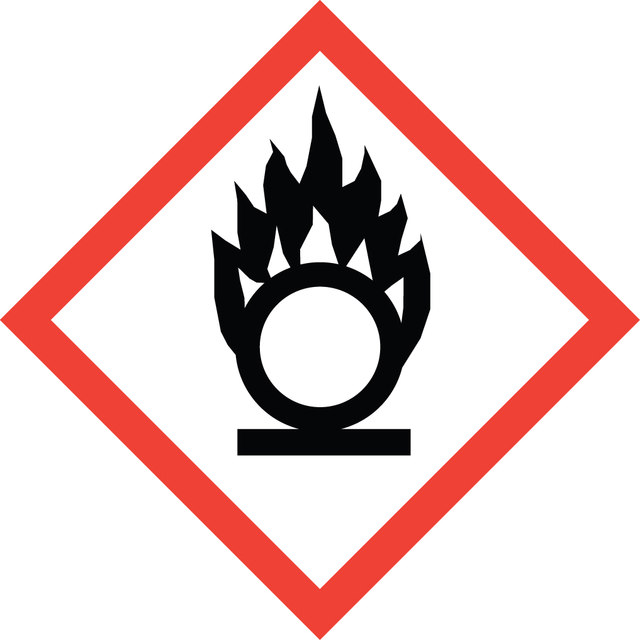Select a Size
About This Item
70%
Product Name
Nitric acid, ACS reagent, 70%
InChI key
GRYLNZFGIOXLOG-UHFFFAOYSA-N
InChI
1S/HNO3/c2-1(3)4/h(H,2,3,4)
SMILES string
O[N+]([O-])=O
grade
ACS reagent
vapor pressure
8 mmHg ( 20 °C)
assay
68.0-70.0% (ACS specification)
70%
form
liquid
ign. residue
≤5 ppm
color
APHA: ≤10
pH
<1.0
bp
120.5 °C (lit.)
density
1.413 g/mL at 20 °C (lit.)
anion traces
chloride (Cl-): ≤0.5 ppm
sulfate (SO42-): ≤1 ppm
cation traces
As: ≤0.01 ppm
Fe: ≤0.2 ppm
heavy metals (as Pb): ≤0.2 ppm
Quality Level
Looking for similar products? Visit Product Comparison Guide
Related Categories
Application
It may be used:
- In combination with acetic anhydride and zeolite catalysts for the preparation of p-nitrotoluene with high regioselectivity.
- In the pretreatment of rice straw for enhanced production of xylose.
- To minimize the extent of cation ordering in LiNi0.5Mn1.5O4, a transition metal-substituted spinel material, by surface treatment.
General description
Other Notes
signalword
Danger
hcodes
Hazard Classifications
Acute Tox. 3 Inhalation - Eye Dam. 1 - Met. Corr. 1 - Ox. Liq. 3 - Skin Corr. 1A
supp_hazards
Storage Class
5.1B - Oxidizing hazardous materials
wgk
WGK 1
flash_point_f
Not applicable
flash_point_c
Not applicable
Regulatory Information
Choose from one of the most recent versions:
Already Own This Product?
Find documentation for the products that you have recently purchased in the Document Library.
Articles
Acid and base chart lists the strength of acids and bases (strongest to weakest) in order. Simple to use laboratory reference chart for scientists, researchers and lab technicians.
Our team of scientists has experience in all areas of research including Life Science, Material Science, Chemical Synthesis, Chromatography, Analytical and many others.
Contact Technical Service

